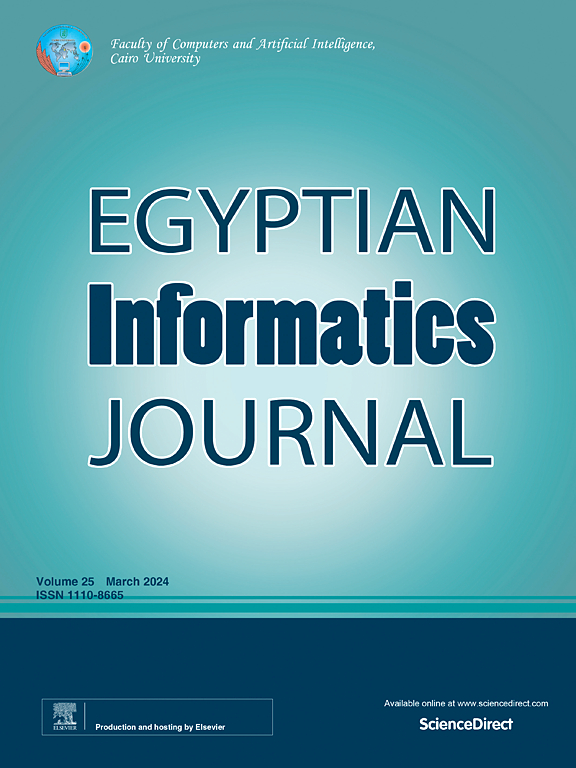基于FeistelX网络的图像加密,利用超混沌融合和扩展DNA编码
IF 4.3
3区 计算机科学
Q1 COMPUTER SCIENCE, ARTIFICIAL INTELLIGENCE
引用次数: 0
摘要
网络攻击日益频繁,对更安全、更高效的图像加密技术的需求日益增加。传统的混沌和基于dna的方法往往存在密钥空间有限、扩散效率低或易受统计攻击的问题,特别是在处理大型或高维图像数据时。本研究介绍了一种图像加密技术,该技术将FeistelX网络与扩展的DNA加密技术和两个不同的二维超混沌映射集成在一起,即二维符号混沌映射(2D-SCM)和二维超混沌指数调整Logistic和正弦映射(2D-HELS),以增强数据安全性。提出的方法协同了三个关键部分:FeistelX网络提供了一个鲁棒的加密框架,其客观性由属性H保证;扩展的DNA密码学扩展了密钥空间,并通过先进的DNA操作最小化像素相关性;这两个超混沌映射生成了高度复杂的混沌序列,确保了更大的随机性和弹性。与现有方案相比,该方法具有更好的弥散性、随机性和抗统计攻击能力。实验结果表明,该方法实现了高安全性指标,卡方值始终低于临界阈值,平均熵值为7.9994,UACI和NPCR指标保持在最佳理论范围内。并且,该方法通过了所有16项NIST随机性检验,平均p值为0.6278。在攻击场景下,PSNR值超过18 dB,显示了对噪声和数据丢失的弹性。这种FeistelX结构、扩展DNA操作和对偶超混沌映射的组合为增强图像加密安全性提供了一种超越传统方法的新颖有效的解决方案。本文章由计算机程序翻译,如有差异,请以英文原文为准。
FeistelX network-based image encryption leveraging hyperchaotic fusion and extended DNA coding
The rising frequency of cyberattacks has heightened the need for more secure and efficient image encryption techniques. Traditional chaotic and DNA-based methods often struggle with limited key space, low diffusion efficiency, or vulnerability to statistical attacks, especially when handling large or high-dimensional image data. This study introduces an image encryption technique that integrates the FeistelX Network with extended DNA cryptography and two distinct two-dimensional hyperchaotic maps, namely the two-dimensional symbolic chaotic map (2D-SCM) and the two-dimensional hyperchaotic exponential adjusted Logistic and Sine map (2D-HELS), to bolster data security. The proposed method synergizes three key components: the FeistelX Network offers a robust encryption framework with bijectivity ensured by property H; the extended DNA cryptography expands the key space and minimizes pixel correlation through advanced DNA operations; and the two hyperchaotic maps generate highly intricate chaotic sequences, ensuring greater randomness and resilience. Compared to existing schemes, the proposed method demonstrates improved diffusion, randomness, and resistance to statistical attacks. Experimental results show that this method achieves high-security indicators, with Chi-square values consistently below the critical threshold, average entropy values of 7.9994, and UACI and NPCR metrics remaining within the optimal theoretical ranges. Moreover, the method passed all sixteen NIST randomness tests with an average p-value of 0.6278. It demonstrated resilience to noise and data loss with PSNR values above 18 dB under attack scenarios. This combination of FeistelX structure, extended DNA operations, and dual hyperchaotic maps offers a novel and effective solution for enhancing image encryption security beyond traditional approaches.
求助全文
通过发布文献求助,成功后即可免费获取论文全文。
去求助
来源期刊

Egyptian Informatics Journal
Decision Sciences-Management Science and Operations Research
CiteScore
11.10
自引率
1.90%
发文量
59
审稿时长
110 days
期刊介绍:
The Egyptian Informatics Journal is published by the Faculty of Computers and Artificial Intelligence, Cairo University. This Journal provides a forum for the state-of-the-art research and development in the fields of computing, including computer sciences, information technologies, information systems, operations research and decision support. Innovative and not-previously-published work in subjects covered by the Journal is encouraged to be submitted, whether from academic, research or commercial sources.
 求助内容:
求助内容: 应助结果提醒方式:
应助结果提醒方式:


